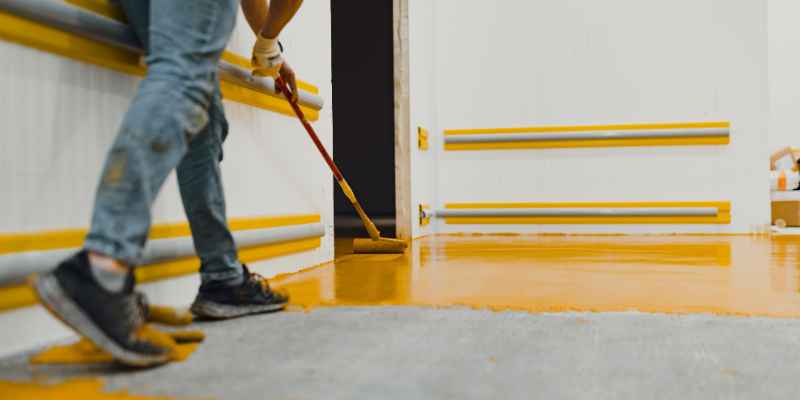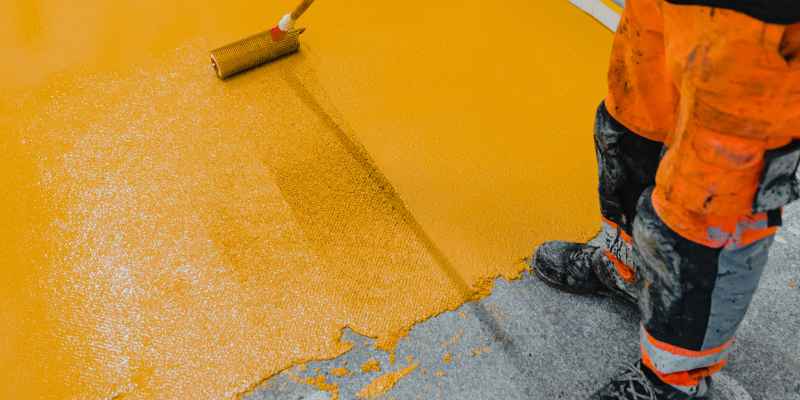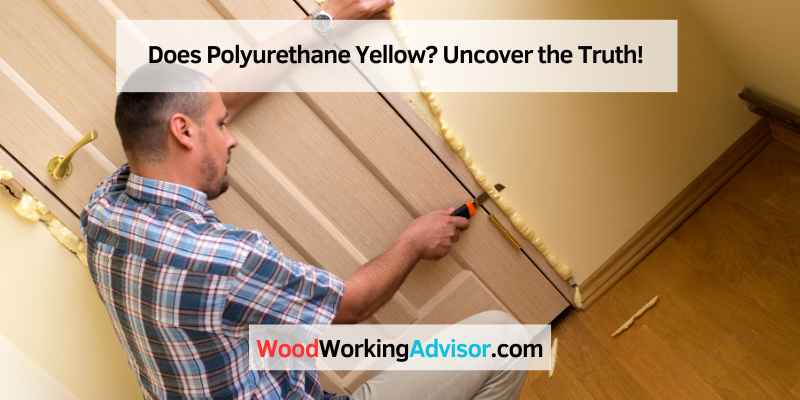Yes, polyurethane can yellow over time due to exposure to light and heat. This yellowing process is a natural result of the chemical composition of polyurethane and is accelerated by external factors such as UV rays and high temperatures.
Understanding the causes of yellowing in polyurethane can help in taking preventive measures and selecting the appropriate finish for different applications. Polyurethane, a versatile and durable material used in various industries, is susceptible to yellowing over time. Factors such as exposure to light, heat, and UV rays can accelerate this process, leading to a change in the appearance of the material.
In this blog, we will explore the reasons behind polyurethane yellowing, its impact on different applications, and methods to prevent or minimize yellowing to maintain the aesthetic appeal and performance of polyurethane products.
Introduction To Polyurethane
Polyurethane does tend to yellow over time due to exposure to light and oxygen. This natural process can vary depending on the formulation and environmental factors. Proper care and maintenance can help slow down the yellowing process of polyurethane surfaces.
Types And Uses
Polyurethane is a versatile material that is used in various industries due to its wide range of applications. It is a polymer composed of organic units linked by carbamate (urethane) links. With its exceptional durability and resistance to wear and tear, polyurethane has become a popular choice for a multitude of purposes.
There are different types of polyurethane available, each catering to specific needs. Some of the common types include:
- Rigid polyurethane foam: Used for insulation purposes in buildings and refrigerators.
- Flexible polyurethane foam: Found in mattresses, upholstery, and automotive interiors.
- Polyurethane coatings: Applied to surfaces for protection against corrosion, abrasion, and weathering.
- Polyurethane adhesives: Used in bonding various materials together.
- Elastomers: Used in the production of gaskets, seals, and wheels due to their excellent flexibility and resilience.
The uses of polyurethane are widespread and extend beyond the mentioned types. Its versatility allows it to be molded into different shapes, making it suitable for a wide range of applications in industries like construction, automotive, furniture, and more.
Popularity In Finishing
Polyurethane is highly popular in finishing applications, thanks to its exceptional properties. When it comes to providing a protective and glossy coating, polyurethane is often the go-to choice. Its ability to resist scratches, chemicals, and UV rays makes it an ideal finish for various surfaces.
Whether it’s wooden furniture, flooring, or even automotive parts, polyurethane finishes offer a durable and long-lasting solution. They enhance the appearance of the surface while providing a protective barrier against moisture, stains, and other external factors that could damage the underlying material.
The popularity of polyurethane in finishing can be attributed to its easy application process. Whether you choose to brush, spray, or roll it on, polyurethane provides a smooth and even finish. Its quick-drying nature allows for faster completion of projects, making it a preferred choice for both professionals and DIY enthusiasts.
In conclusion, polyurethane is a versatile material that finds its application in various industries. Its different types cater to specific needs, and its popularity in finishing can be attributed to its exceptional properties and ease of application.
The Yellowing Phenomenon

When it comes to polyurethane, one of the common concerns is the yellowing phenomenon. Understanding why polyurethane yellows and the common misconceptions surrounding this issue is essential for anyone working with this material.
What Is Yellowing?
Polyurethane yellowing refers to the gradual development of a yellow or amber tint on the surface of polyurethane materials over time. This phenomenon can occur due to various factors, including exposure to light, heat, and certain chemicals.
Common Misconceptions
There are several misconceptions surrounding polyurethane yellowing, including the belief that all polyurethane materials will yellow over time. In reality, the extent and rate of yellowing can vary based on the specific formulation of the polyurethane and the environmental conditions it is exposed to.
Factors Contributing To Yellowing
Polyurethane can yellow due to factors like exposure to UV light and aging. These elements can cause the polyurethane to undergo a chemical reaction, leading to a yellowing effect over time. Regular maintenance and proper care can help prevent or minimize this discoloration.
Polyurethane is a popular choice for protecting and enhancing the beauty of various surfaces. However, over time, polyurethane may start to yellow, which can detract from its appearance. Understanding the factors that contribute to yellowing can help you take preventive measures and maintain the longevity of your polyurethane finish.
Exposure To Sunlight
One of the primary factors that can cause polyurethane to yellow is exposure to sunlight. When polyurethane is exposed to ultraviolet (UV) rays from the sun, a chemical reaction occurs, leading to discoloration. The UV rays break down the chemical bonds in the polyurethane, causing it to become yellow or amber in color.
To minimize yellowing due to sunlight exposure, it is important to protect surfaces with polyurethane from direct sunlight. This can be done by applying curtains or blinds to windows, using UV-blocking films, or positioning furniture and objects in a way that limits direct sunlight exposure.
Chemical Reactions
Polyurethane can also undergo chemical reactions with certain substances, leading to yellowing. For example, when polyurethane comes into contact with acidic or alkaline cleaners, household chemicals, or certain types of wood, a reaction can occur that alters the color of the finish. These chemical reactions can cause the polyurethane to turn yellow or develop a yellowish tint.
To prevent yellowing due to chemical reactions, it is crucial to use pH-neutral cleaners and avoid harsh chemicals that can react with the polyurethane. Additionally, it is recommended to test any new cleaning products or chemicals on a small, inconspicuous area before applying them to the entire surface.
Aging Process
Over time, polyurethane naturally undergoes an aging process, which can contribute to yellowing. As the polyurethane finish ages, it becomes more susceptible to the effects of UV rays and chemical reactions. This gradual degradation can result in a yellowish appearance.
While it is not possible to completely halt the aging process, regular maintenance and care can help slow down yellowing. Applying a fresh coat of polyurethane or using protective coatings can provide an additional layer of defense against UV rays and chemical reactions, helping to preserve the original color and clarity of the finish.
In conclusion, several factors can contribute to the yellowing of polyurethane, including exposure to sunlight, chemical reactions, and the natural aging process. By understanding these factors and taking preventive measures, you can maintain the beauty and longevity of your polyurethane finish. Remember to protect surfaces from direct sunlight, use pH-neutral cleaners, and consider regular maintenance to minimize yellowing and keep your polyurethane looking its best.
Comparing Water-based And Oil-based Polyurethane
When it comes to protecting wood surfaces, polyurethane is a popular choice due to its durability and long-lasting finish. However, there are two main types of polyurethane: water-based and oil-based. Understanding the differences between the two can help you make an informed decision when choosing the best option for your project.
Differences In Composition
Water-based polyurethane is made with synthetic resins and doesn’t contain the same level of VOCs (volatile organic compounds) as oil-based polyurethane. On the other hand, oil-based polyurethane is composed of natural oils and synthetic resins, giving it a more traditional composition.
Yellowing Propensity
Yellowing is a concern for many woodworkers, and it’s important to note that both water-based and oil-based polyurethane can yellow over time. However, oil-based polyurethane tends to yellow more than its water-based counterpart, especially when exposed to sunlight.
Choosing Between The Two
When choosing between water-based and oil-based polyurethane, consider the specific needs of your project. If you prioritize environmental friendliness and a quick drying time, water-based polyurethane may be the better choice. On the other hand, if you’re looking for a more traditional finish and don’t mind a longer drying time, oil-based polyurethane could be the ideal option.
Preventive Measures And Solutions

Polyurethane can turn yellow due to several factors such as exposure to sunlight, heat, and oxidation. However, preventive measures such as using UV-resistant coatings and storing polyurethane in a cool and dry place can help prevent yellowing. Additionally, solutions such as sanding and refinishing can restore the appearance of yellowed polyurethane surfaces.
Preventive Measures and Solutions: Does Polyurethane Yellow?
Polyurethane is a popular choice for coating surfaces due to its durability and resistance to wear and tear. However, over time, it may turn yellow, which can be unsightly and affect the appearance of the surface. In this section, we’ll discuss the preventive measures and solutions you can take to prevent or fix yellowing of polyurethane.
Surface Preparation
Proper surface preparation is essential to prevent yellowing of polyurethane. Before applying polyurethane, ensure that the surface is clean, dry, and free of any contaminants such as dust, dirt, or oil. Sanding the surface can also help create a better bond between the surface and the polyurethane.
Selection Of Polyurethane
Choosing the right type of polyurethane is crucial to prevent yellowing. Water-based polyurethane is less likely to yellow compared to oil-based polyurethane, so it’s a good option for surfaces that are exposed to sunlight or UV rays. It’s also important to choose a polyurethane that’s designed for the specific surface you’re coating, such as floors, furniture, or countertops.
Maintenance Tips
Proper maintenance of the coated surface can also prevent yellowing of polyurethane. Avoid exposing the surface to direct sunlight or UV rays for extended periods, as this can cause the polyurethane to yellow. Regular cleaning and dusting can also help prevent the buildup of dirt and grime that can discolor the polyurethane.
In conclusion, yellowing of polyurethane can be prevented by proper surface preparation, choosing the right type of polyurethane, and proper maintenance of the coated surface. By following these preventive measures and solutions, you can ensure that your polyurethane coating remains clear and free of yellowing for years to come.
Real-world Examples
Polyurethane can yellow over time due to exposure to light and heat, but several real-world examples demonstrate how this process can be mitigated. By using UV-resistant polyurethane and minimizing exposure to sunlight, you can prevent yellowing and maintain the original appearance of the material for longer periods.
Case Studies
Polyurethane yellowing can be seen in various products like white furniture after prolonged exposure to sunlight.
Testimonials From Professionals
Professionals confirm that polyurethane can indeed yellow over time, affecting the appearance of the product.
Alternatives To Polyurethane
Polyurethane can yellow over time, but there are alternatives available. These alternatives, such as water-based finishes or UV-resistant coatings, provide a clear and durable finish without the risk of yellowing.
Other Finishing Options
Polyurethane can yellow over time, prompting some to seek alternatives.
Pros And Cons
Polyurethane alternatives offer various benefits and drawbacks to consider.
Polyurethane tends to yellow with age, leading many to explore other finishing options.
Other Finishing Options
When looking for alternatives to polyurethane, consider various options.
One alternative to polyurethane is lacquer, which provides a durable finish.
Shellac is another option to consider, offering a natural and glossy finish.
Varnish is a popular choice known for its durability and ability to resist heat and moisture.
Oil finishes, such as tung oil or linseed oil, provide a natural and warm look.
Water-based finishes are environmentally friendly and dry quickly.
Each alternative has its own pros and cons to consider.
Frequently Asked Questions
Does Polyurethane Turn Yellow Over Time?
Polyurethane can yellow due to exposure to light and oxygen. Using UV-resistant polyurethane or adding a protective topcoat can help prevent yellowing.
How To Prevent Polyurethane From Yellowing?
To prevent yellowing, choose a non-yellowing polyurethane, apply thin coats, and keep the surface away from direct sunlight.
Can Yellowed Polyurethane Be Restored To Its Original Color?
Yellowed polyurethane can be restored by sanding down the affected layers and applying a fresh coat of polyurethane.
Why Does Polyurethane Yellow Faster Outdoors?
Polyurethane yellows faster outdoors due to exposure to UV rays and environmental factors. Using outdoor-specific polyurethane can help prevent yellowing.
Conclusion
Polyurethane can yellow over time due to various factors such as exposure to UV light, heat, and chemical reactions. However, using high-quality polyurethane products and taking proper care and maintenance can slow down or prevent yellowing. It is crucial to choose the right type of polyurethane for your specific needs and follow the manufacturer’s instructions carefully.
By doing so, you can ensure the longevity and aesthetic appeal of your polyurethane products.


